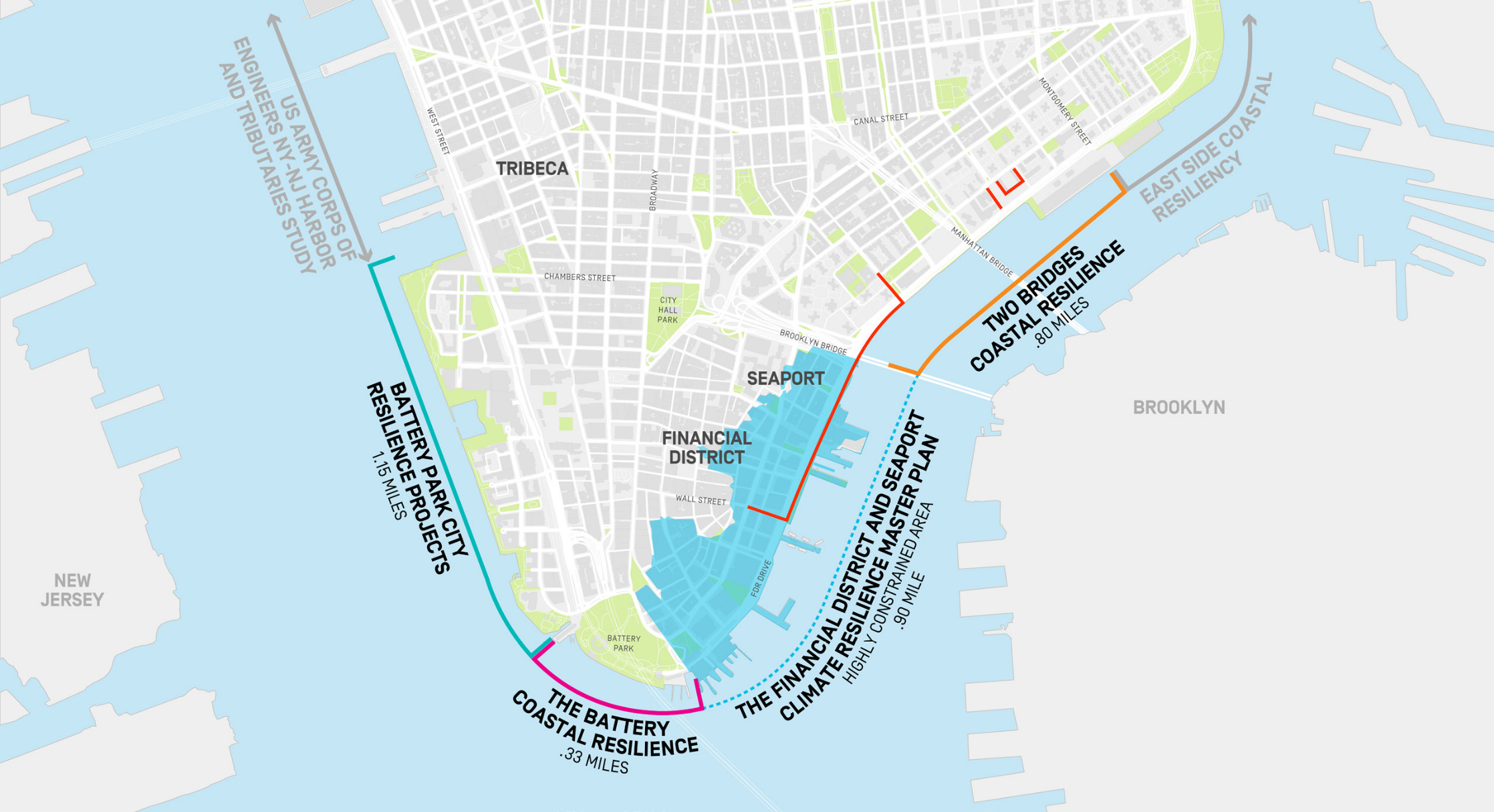Climate Adaptation Strategy for Lower Manhattan
Challenge
New York City, like many other coastal cities around the world, must face the realities of climate changes and its impact on the urban environment. Over the next century, regular tidal flooding caused by rising sea levels, coastal surge from stronger and more frequent storm events, heavier precipitation, and higher temperatures will all impact New York City and threaten its quality of life and economic vitality. Lower Manhattan, due to its global importance and heightened exposure, is one of the most vulnerable neighborhoods in the City.
The New York City Economic Development Corporation and the New York City Mayor’s Office of Recovery and Resiliency engaged HR&A to co-lead a team that developed a strategic plan for Lower Manhattan as part of the Lower Manhattan Coastal Resiliency Study.
Solution
Drawing on deep experience with the dynamics of Lower Manhattan and the design and implementation of innovative climate adaptation strategies, HR&A and the team undertook a climate vulnerability assessment that looked at long-term climate hazards, including chronic stresses, to inform the development of potential strategies for Lower Manhattan’s resilience. Strategies were evaluated based on the ability to mitigate against climate hazards and their positive economic and community impacts.
Impact
As part of the Study’s development, HR&A conducted a financial feasibility assessment and identified a series of next steps towards implementation. The recommendations of the study were released as part of Mayor de Blasio’s March 2019 announcement for a Lower Manhattan Climate Resilience plan, including a bold op-ed penned for New York Magazine. The City is currently moving to develop a master plan focused on climate adaption in the Financial District and Seaport.

HR&A developed a long-term climate adaptation strategy and implementation roadmap to help protect Lower Manhattan from increasing climate hazards.